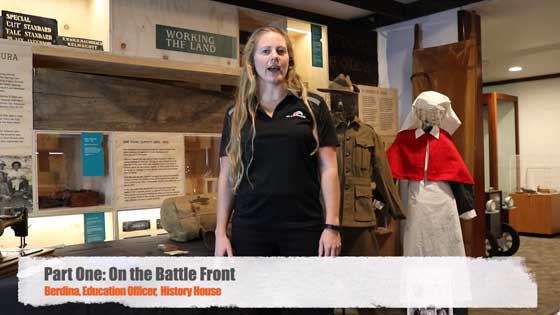Using this Resource
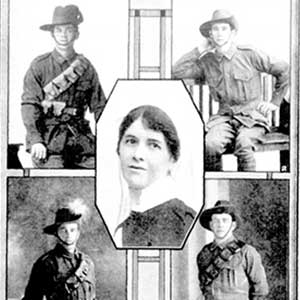
Alice Maude Martin and her brothers (clockwise from top left) Frank, George, Lewis and William all enlisted to serve in World War 1. They all survived the war.
© Western Mail May 21, 1916
This online resource has three parts that can be used independently or together.
Part 1 is a set of research topics and activities to help give students a good background understanding of the topic and get the most out of Part 2.
Part 2 The World at War – Armadale video has been separated into two parts. The first is about local soldiers and nurses that fought the battle at the front lines, and the second is about experiencing the war on the home front. Original objects that date back to World War 1 are used in both videos.
Part 3 is a series of further research questions using the traditional inquiry focus covering who, what, when, where, why and how. There is also a list of activities that you can involve students in.
This topic is directly linked to the curriculum in year 2, 3, 9 and 10. Choose the activities most suited to your students. Secondary links to the History and Social Science (HASS) curriculum outcomes are present for all primary grades.
1. Preparation Research & Questions
Use these questions and topics to do some preliminary research or brainstorm the subject of ANZAC day and the world wars in general.
-
Find out what these words mean: enlist, ammunition, battalion, troop, puttees, bayonet, Prisoner of War, memorial, and shrapnel.
- On a world map or globe find/mark: Australia, Europe, England, France, Egypt, Gallipoli, Germany, Austria, Russia, and Italy.
- Where was World War 1 fought?
- Who were the major countries on each fighting side?
- What does trench warfare refer to?
- Make a list of as many different defence force (army) jobs as you can think of. Can you think of more than 6?
- If you were a soldier going to war, what sort of things would you pack in your kit bag to take with you? What things do you think you would miss the most from home that you can’t take with you?
- As many of the men from towns like Armadale went to war, their jobs at home had to be done by others. What sort of jobs would this include? Who do you think did these jobs?
- WW1 had a significant impact on Australian people. What sort of traditions or memorials do we have today to help us remember this?
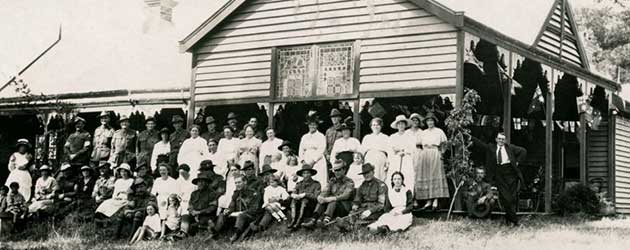
August 1918. Armadale Red Cross branch hosting soldiers on a day trip from No 8 General Hospital in Fremantle at ‘Brookside’, today the site of Minnawarra Park.
© Birtwistle Local Studies Library
2. Watch Video
History House - Part One - On the Battle Front
This first video aims to show you some unique historic objects, used over 100 years ago in World War 1 by soldiers or nurses from the Armadale area.
History House - Part Two - On the Home Front
The second video aims to explain a little what was happening on the Armadale home front while the battles were being fought in Europe. Some ideas on how and why we commemorate Anzac day are also included.
Visit the ANZAC Day: How the City of Armadale has remembered those who have served online exhibition.
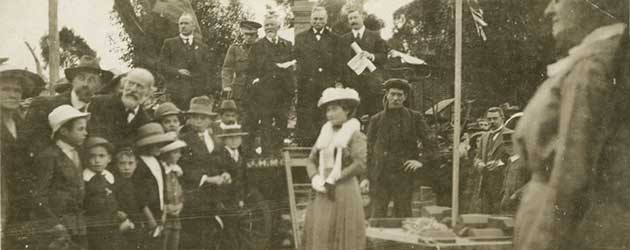
Mrs Marian Cullen unveiling the foundation stone for the Armadale Roll of Honour Obelisk. 12 August 1916.
© Birtwistle Local Studies Library
Remember that there are a lot more stories than we can tell in a short video, and a future visit to the museum could be a great way to learn about some of these!
3. Further Research & Activities
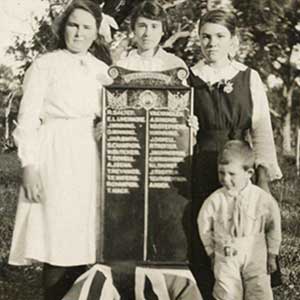
Rose Livingstone, Alma Reyniker, Kitty Dowell and a young boy posing with the Bedfordale Honour roll, 24 May 1916. Rose, Alma and Kitty had brothers serving overseas. Kitty received news four months after this photo that her brother William had been killed in action.
© Birtwistle local studies library
At this point students should have some background and local understanding and knowledge of World War 1 in particular. A good way to develop a deeper understanding is to record what you know about the topic, and what kind of things you would still like to find out. Think about these two things from as many angles as you can. Use the following who, what, when, where, why and how questions to help.
- What do we remember on Anzac day?
- When do we remember Anzac day? When did the Anzacs fight?
- Where do we remember Anzac day? Where have the Anzacs fought?
- Who do we remember on Anzac day?
- How do we remember Anzac day?
- Why do we remember Anzac day?
These questions can be answered at any level, and for the older age groups students can be encouraged to establish more inquiry questions under each key question, for example:
1. What do we remember on Anzac day?
At lower primary could be simply answered with ‘the sacrifices made by our soldiers’ and ‘the end of World War I’ while at higher levels could extend to include: What happened that caused Australian soldiers to be sent to a war in Europe? What training did they have? What conditions did they endure? What legacy did they create? What happened that meant World War I was not “the war to end all wars”? The answer to each of these allow for a deeper understanding of what we remember!
This is a great opportunity to target your research to a specific interest area, or broaden your research to include other wars, the home front during war, national politics at the time, scientific and engineering developments of war time, even traditions and legends that were created through battles! Some specific questions to help you get started could be:
- Choose one of the conflicts ANZACS have been involved in and find out why and how it started. This could include: World War I, World War II, Korean War, Malayan emergency, Vietnam War, Gulf Wars - Iraq, War in Afghanistan or Peacekeeping efforts.
- Log onto www.birtwistlewiki.com.au and choose a local nurse or soldier to do further research on. You could write a biography about them, a diary they might have written about their experiences, a story about them, or imagine writing them a postcard or letter - what else might you send them in the post?
- Find out more about the customs and traditions we have to remember our soldiers. Where does it originate from? How and why is it used today? Some you could think about researching include: flying flags at half mast, gun salutes/volleys, the eternal flame, poems, playing the Last Post and Reveille, wreath laying, dawn service, a time of silence, the tomb of the Unknown Soldier, avenues of tree, the use of rosemary/poppies, or Anzac Biscuits!
- Find out where your local war memorial is, or chose a well-known memorial like Kings Park. Research when and how it was made and how it is used today.
-
Think about, brainstorm or have a discussion around these questions: Why do we remember? Should we remember or just move forward? Is Anzac or Remembrance Day a sacred event? What is the significance of Anzac or Remembrance Day?
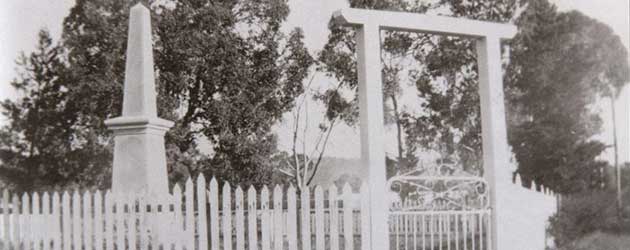
Kelmscott war memorial unveiled 1921. Includes the names of men and women from Kelmscott, Roleystone and Karragullen who enlisted in World War 1.
© Birtwistle local studies library.
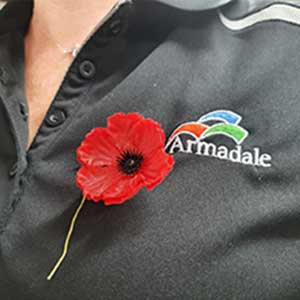
Activity Ideas:
Poppies are worn on Anzac day to remember those who made sacrifices for the freedoms we know in Australia today.
© History House Museum
(The internet is full of great resources that can help here, simply search your craft idea and you will get a wide choice)
- Make your own poppy
- Make your own trench periscope
- Colour an Anzac themed picture, eg: wreaths, soldiers, poppies, flags
- Design & create your own wreath
- Write your own poem
- With the help of your parents make some ANZAC biscuits

